Choosing Your Sacred Space: Design with Intention – A Gardener’s Sanctuary
Remember that cluttered corner perpetually overflowing with forgotten gardening tools? The one you keep promising yourself to tackle? Mine looked a lot like that – a chaotic jumble reflecting the inner turmoil I was feeling. Work deadlines loomed, relationships were strained, and the constant buzz of the outside world left me feeling utterly disconnected.
One day, amidst the chaos, I stumbled upon a hidden gem: a patch of sunlight nestled beneath the sprawling branches of an old oak. Drawn by its quiet beauty, I decided to transform this forgotten corner into something more – a sanctuary for my soul. What unfolded wasn’t just a garden makeover; it was a journey of rediscovering myself.
This, my friends, is the magic of a sacred garden. It’s not about perfectly manicured lawns or exotic blooms. It’s about carving out a space, however big or small, where you can shed the everyday and connect with the peace that resides within. Here, amongst the whispers of leaves and the gentle hum of nature, you can cultivate calm, nurture your spirit, and find a sense of belonging.
So, are you ready to unveil your own secret garden? Let’s embark on this journey together, one where we transform a corner of our world into a haven for our soul.
Finding Your Sanctuary: Where Nature Meets Your Spirit
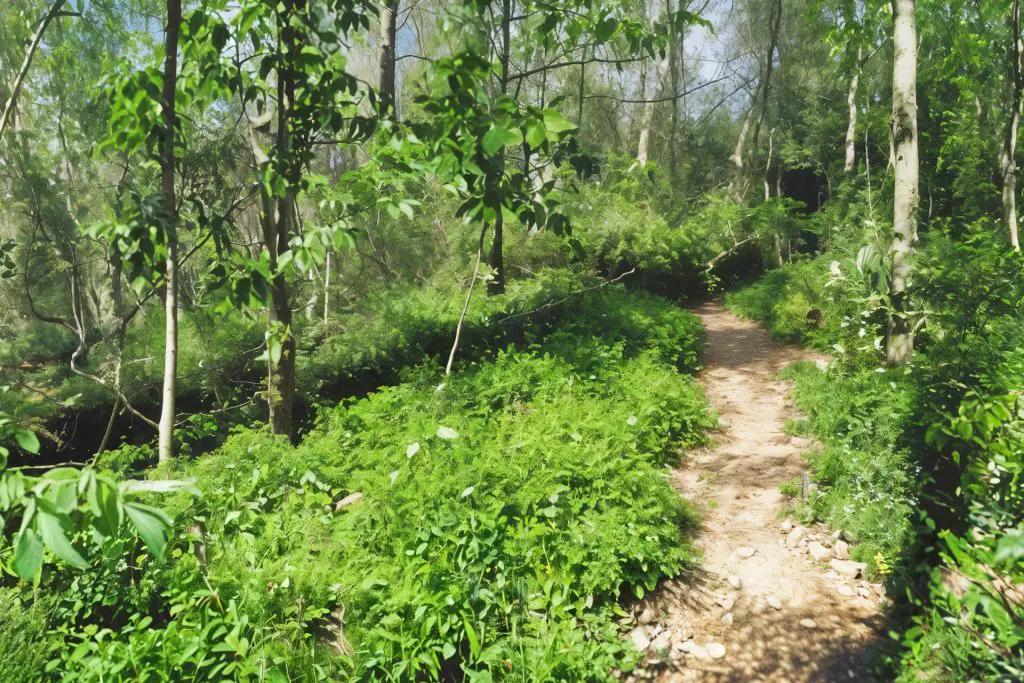
Sure, every gardener dreams of that picture-perfect plot bathed in sunshine with ample room for sprawling flower beds. But when it comes to crafting a sacred space, the most important factor isn’t square footage or sun exposure – it’s about feeling a connection.
The Power of Intuition
Before you start scouting out potential locations, take a moment to reflect on what resonates with you. The key is to listen to the whispers of your garden. What are your personal values, goals, and aspirations?
What brings you joy, comfort, and serenity? Is there a specific spot that consistently draws you in? That forgotten corner beneath the oak that spoke to me might not be everyone’s cup of tea. Maybe for you, it’s a quiet nook on your balcony bathed in the morning light, or a shady spot under a beloved fruit tree. Perhaps it’s where the first rays of sunlight kiss the dewdrops on your roses, or a quiet corner where the gentle rustle of leaves creates a natural white noise machine
Allow your intuition to guide you as you explore your outdoor space. You might be surprised at how your inner wisdom can lead you to the perfect spot. Don’t be afraid to get creative! Even container gardens on balconies or fire escapes can be transformed into sacred spaces.
Practical Considerations
While intuition plays a significant role in selecting your sacred space, there are also some practical considerations to keep in mind:
- Sunlight: Most plants require at least six hours of direct sunlight per day. If your garden will be shaded, choose plants that thrive in low-light conditions.
- Soil: Test your soil type and pH level to determine which plants will flourish in your garden.
- Accessibility: Ensure your sacred space is easily accessible, especially if you plan to spend extended periods meditating or practicing yoga.
- Size: Consider the size of your garden and how it will impact your design and plant choices.
Intuitive Guidance
As I reflect on my own journey, I recall the time I stumbled upon a hidden corner in my backyard. It was tucked away behind a cluster of trees, and the sunlight filtering through the leaves created a dappled, peaceful atmosphere. I felt an inexplicable sense of calm wash over me, and I knew – without a doubt – that this was where I wanted to create my spiritual garden. Sometimes, the perfect spot chooses you, rather than the other way around.
Remember, your sacred space isn’t about conforming to some pre-defined notion of perfection. It’s about carving out a little piece of your world that resonates with your spirit. Let intuition be your guide, and trust that the perfect spot for your sanctuary is already waiting to be discovered.
Design with Intention: Cultivating a Haven for Tranquility
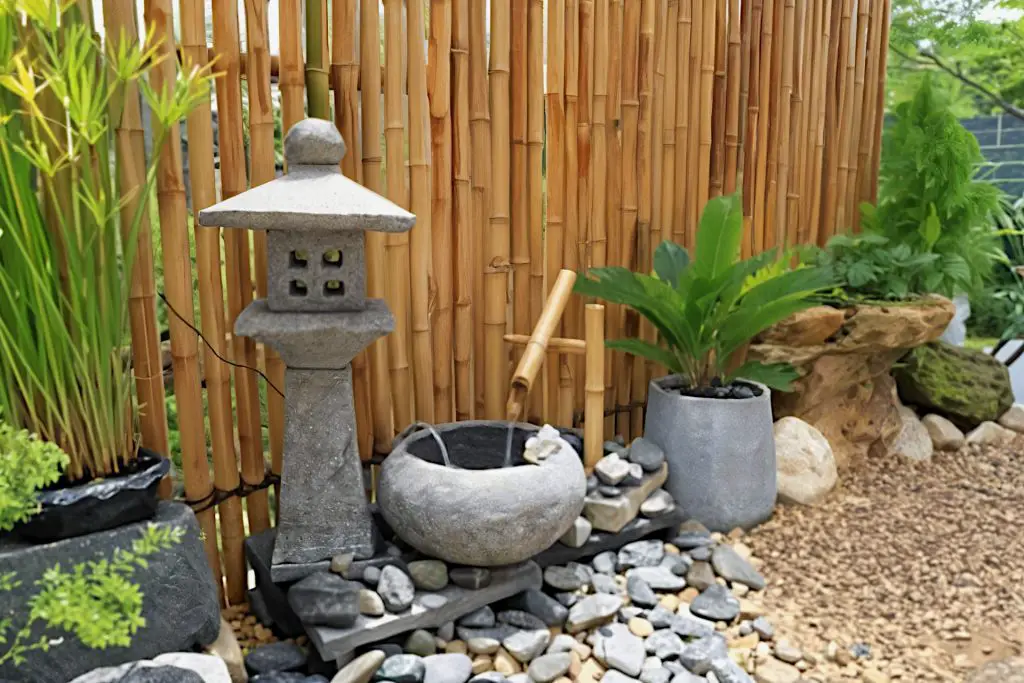
Once you’ve unearthed the hidden gem in your garden, it’s time to think about transform it into a haven for tranquility that is personal to you. Here’s where you can use design elements to mold the space, There are many design elements that can contribute to a spiritual garden, each one serving as a gentle nudge towards your inner peace.
Pathways to Peace:
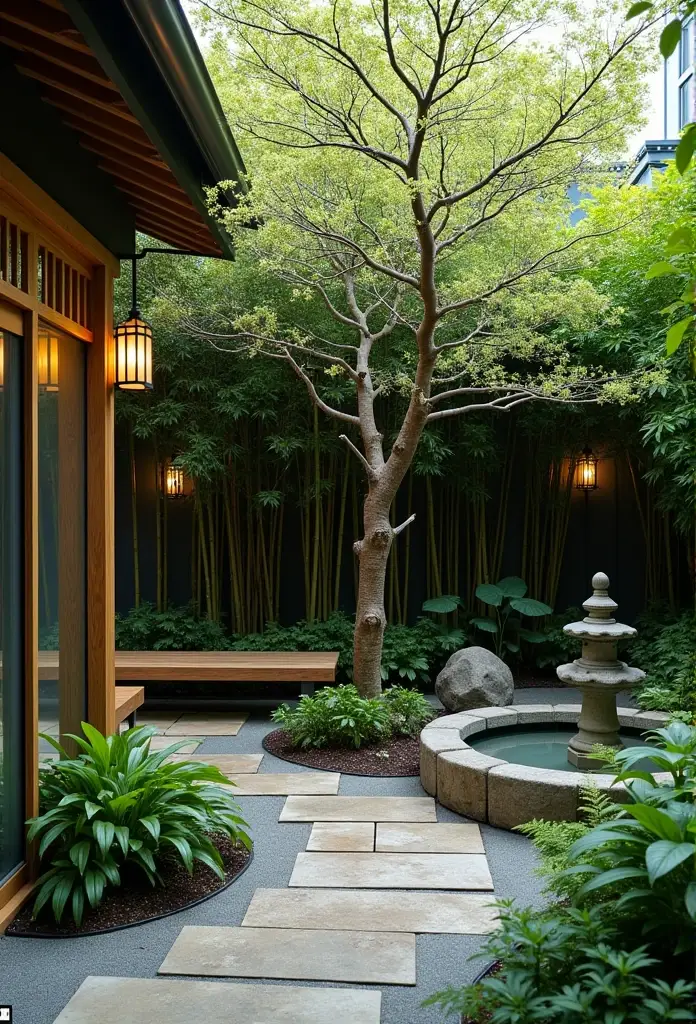
Imagine your sacred space as a separate realm, a sanctuary tucked away from the everyday hustle. This sense of separation can be beautifully achieved using pathways. A winding path lined with fragrant herbs like lavender or chamomile not only guides you physically but also helps ease your mind from daily worries with each step. Consider using stepping stones for a rustic feel, or create a meandering gravel path that invites a slow, deliberate walk.
Seating Areas for Contemplation:
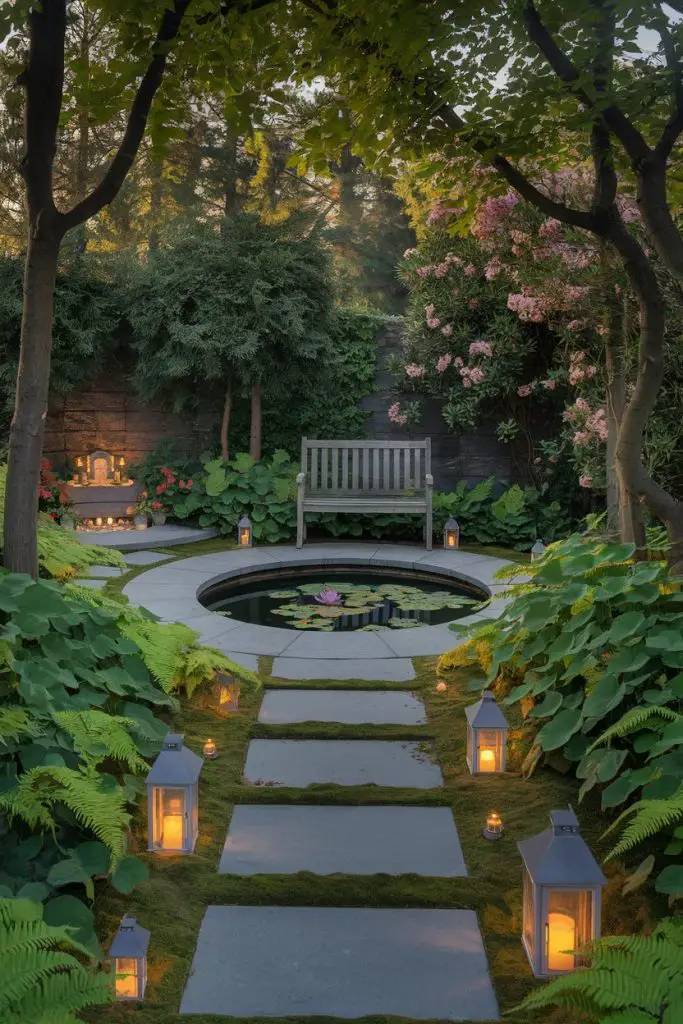
Once you’ve arrived in your sanctuary, it’s time to create a dedicated space for reflection and rejuvenation. A simple wooden bench tucked under the cascading branches of a flowering vine can provide the perfect spot for quiet contemplation. For a touch of luxury, consider a comfortable hammock strung between trees, swaying gently in the summer breeze.
The ultimate haven, however, might be a dedicated meditation platform. This can be as simple as a raised wooden platform with comfortable cushions, or you can explore more elaborate options like a small Japanese-style tea house. Remember, the key is to create a space that feels uniquely yours, a place where you can truly settle in and connect with your inner self.
Water Features for Reflection:
The gentle murmur of water has a well-documented calming effect. Introducing a water feature into your sacred space can further enhance its tranquility. A small, bubbling fountain nestled amidst your favorite plants can create a soothing white noise that washes away the stresses of the day.
For a more natural touch, consider a birdbath that attracts feathered friends, or even a small, trickling stream if space allows. The sight and sound of flowing water has a powerful ability to lull the mind into a state of peace, making your sacred space an even more inviting refuge.
A Touch of the Personal: Statues with Soul
While pathways, seating areas, and water features create a calming atmosphere, your sacred space can truly become your own with the addition of a personal touch. Consider incorporating a statue or sculpture that holds deep meaning for you.
Perhaps it’s a weathered sundial passed down through generations, a hand-carved wooden Buddha radiating serenity, or a simple stone angel offering a sense of solace. The object itself isn’t as important as the emotions it evokes. Every time your gaze falls upon this personal focal point, let it be a reminder of the peace and strength you seek to cultivate within your sanctuary.
This statue doesn’t have to be grand or expensive. It could be a seashell from a cherished vacation, a miniature replica of your favorite animal, or even a piece of driftwood sculpted by the tides and imbued with the calming energy of the ocean. The key is to choose something that resonates with your spirit and acts as a tangible symbol of your personal journey.
Nature’s Symbolism: Planting with Purpose
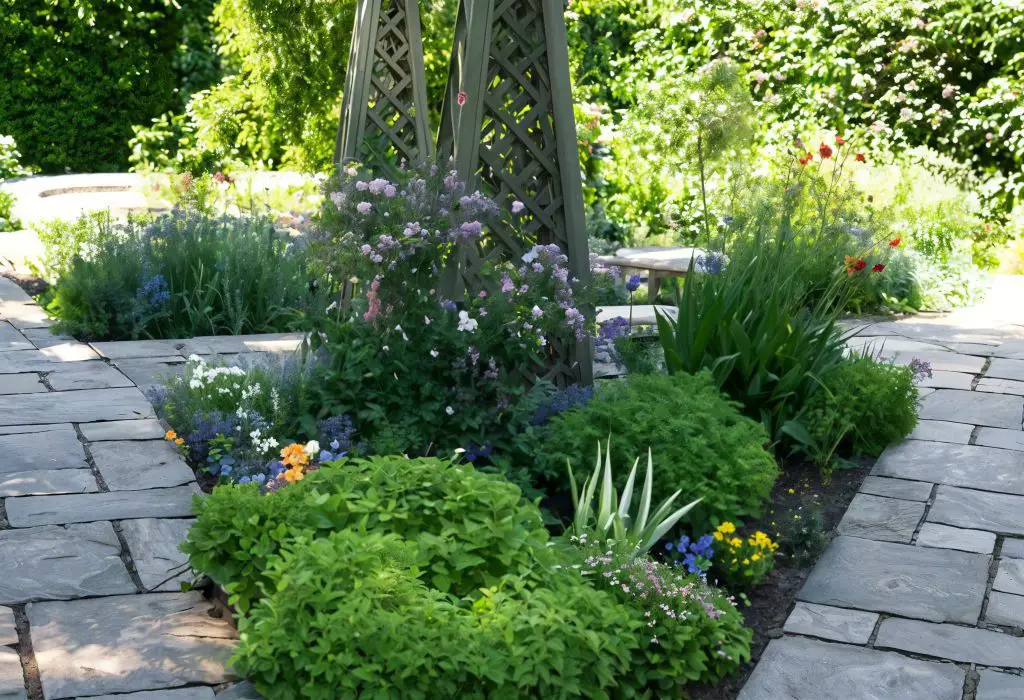
Plants are more than just living decorations in your sacred space; they can become powerful allies on your path to inner peace. Many cultures have imbued plants with symbolic meaning, and incorporating these symbolic elements into your spiritual garden design can add a deeper layer of personal connection to your sanctuary.
For centuries, many cultures have imbued plants with symbolic meaning, and incorporating these symbolic elements into your garden design can add a deeper layer of personal connection to your sanctuary. Here are a few commonly used plants in a spiritual garden:
- Rose: Love, compassion, and devotion
- Lily: Purity, innocence, and refined beauty
- Oak: Strength, courage, and wisdom
- Lavender: Calmness, serenity, and peace
Think of it as weaving a tapestry of meaning. Perhaps you long for more love in your life. Plant a rose bush, a symbol of love in many cultures, and use the act of tending to it as a metaphor for nurturing the love within yourself. Or maybe you crave a sense of purity and renewal. Surround your meditation platform with lilies, representing these qualities, and let their serene beauty inspire your practice.
A Spiritual Plant Palette
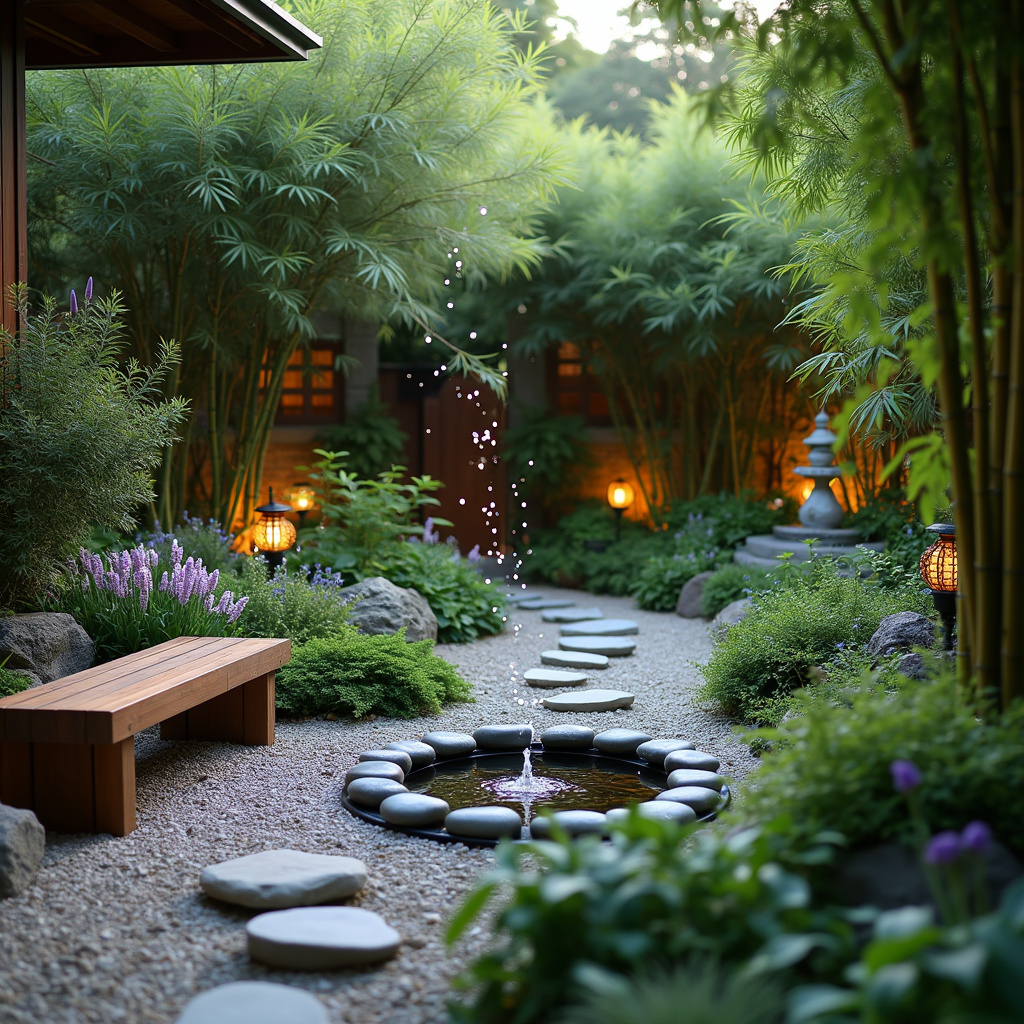
with careful thought you can build a “spiritual plant palette” and enhance the spiritual ambiance of your garden. Ideas include:
- Herbs: Basil for clarity, mint for focus, and chamomile for calmness
- Flowers: Sunflowers for joy, daisies for innocence, and marigolds for creativity
- Trees: Willow for flexibility, olive for peace, and cedar for protection
In truth, the possibilities are endless! Here are a few examples to get you started:
- Strength and Stability: Plant an oak tree, a symbol of enduring strength, or rosemary, associated with mental fortitude.
- Peace and Tranquility: Incorporate lavender, known for its calming properties, or ferns, representing serenity and inner peace.
- Wisdom and Growth: Consider a bonsai tree, symbolizing wisdom and patience, or bamboo, representing resilience and growth.
Your Unique Garden Story:
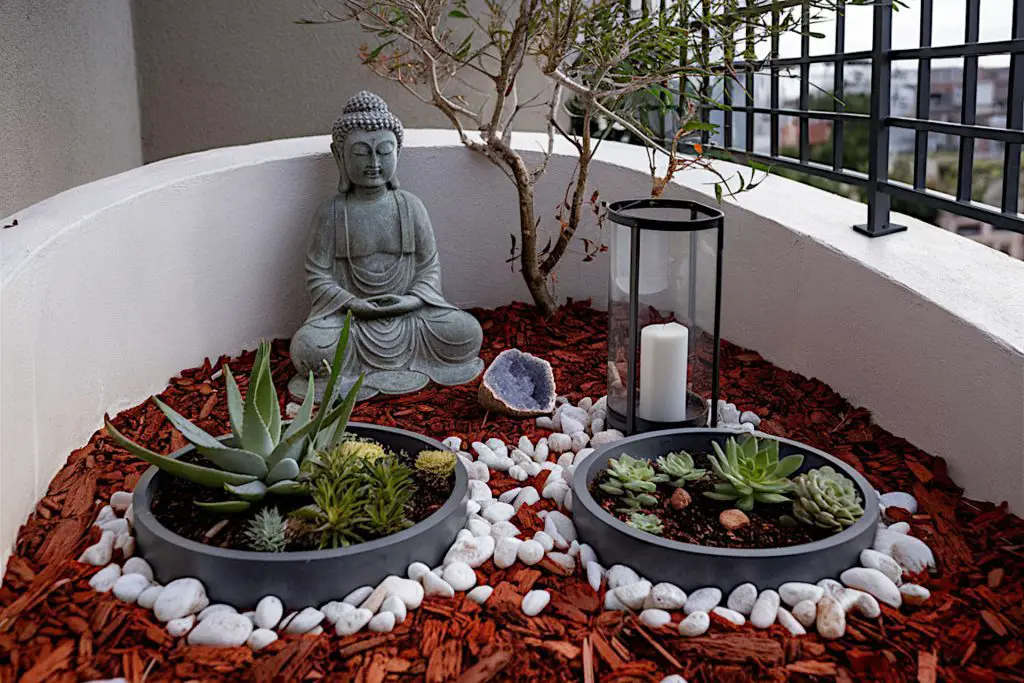
Don’t be afraid to delve deeper and research plants with specific meanings that resonate with you. Maybe you have a childhood memory associated with honeysuckle, or a deep connection to the symbolism of the sunflower. Incorporate these plants into your sacred space, allowing them to become personal anchors on your journey towards inner peace.
There are no right or wrong choices here. The key is to choose plants that speak to your soul, becoming visual anchors for the emotions and intentions you wish to cultivate in your sanctuary. Let your garden become a reflection of your inner world, a space where the language of flowers and foliage intertwines with your own personal journey.
Bringing it All Together
As you can see, your spiritual garden will only work if it resonates with your soul. The perfect location, designing a peaceful and meditative space, and choosing plants that align with your intentions, all play a role. Now, it’s time to bring it all together and create a sacred space that nourishes your mind, body, and spirit.
Integrating the Elements
When you begin to design your spiritual garden, remember to integrate the elements we’ve discussed and consider the following:
- Location, location, location: Select a location that resonates with your heart and intuition.
- Design for serenity: Incorporate meandering paths, seating areas, and water features to create a peaceful ambiance.
- Plant with purpose: Choose plants that align with your intentions, symbolize meaningful concepts, and provide a rich sensory experience.
Tips for Maintenance and Evolution
As your spiritual garden grows and evolves, remember to:
- Tend with love: Nourish your plants with care and attention, just as you would tend to your own soul.
- Be patient: Allow your garden to evolve and change, just as you do.
- Stay intentional: Continuously assess and adjust your design to ensure it remains aligned with your intentions and goals.
Final Thoughts
As I reflect on my own spiritual garden, I’m reminded of the transformative power of nature and the importance of creating spaces that connect with our souls. Hopefully I have inspired you to embark on your own road to creating and developing a spiritual garden, a sacred space that resonates with your heart and soul.
Remember, the first step on the road begins within.
